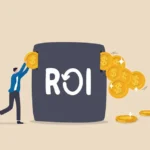
The Federal Reserve committee inaugurated the much-anticipated interest rate cut cycle in mid-September, slashing half a percentage point off its benchmark rates without waiting to hit its actual 2% inflation target. The objective of the bigger-than-expected rate cut was to avert a recession when a weaker-than-expected July jobs report officially triggered the Sahm Rule—a historical recession indicator that has a consistent 100% (well, almost) accuracy rate for every recession since the early 1970s. This gives rise to a few questions such as:
- Is the U.S. economy in a recession or heading to one?
- Are recession concerns overhyped?
- What impact does a recession have on the stock market?
- What are the stocks that investors can consider in view of the rate cuts and renewed recession fears?
Understanding The Recent Fed Rate Cut
Quick Takeaways:
- The Fed did not wait to cut benchmark interest rates until the 2% inflation target was hit, signaling that its current focus is to stave off a recession.
- With the bold half-percentage rate cut, the Fed is hoping for a soft landing, a scenario in which the economy slows sufficiently to reduce inflation without entering a recession.
- The Sahm Rule, a historically accurate and reliable recession indicator, was triggered when the unemployment rate hit 4.3% in July—the highest level since October 2021.
- However, the rule’s inventor, Claudia Sahm, does not believe that the U.S. is currently in a recession but sees the odds of a recession increasing.
- A slightly improved September jobs report put to bed concerns of a looming disaster, at least temporarily. But is the economy completely out of the woods?
The Federal Reserve launched its interest rate cut cycle on September 18 by aggressively slashing 50 basis points off benchmark rates, lowering the federal funds rate to a range of 4.75% to 5%. This is the first rate cut in four years since the Fed’s emergency response to pandemic shutdowns in March 2020. Another half-percentage point reduction before this year-end is likely, with an additional percentage-point cut anticipated in 2025.
The Fed raised interest rates from March 2022 to July 2023 to ease inflation, which had surged to the highest levels in more than four decades. When inflation shoots up, the Fed typically steps in to cool it by raising interest rates and making borrowing more expensive. This brings down spending and demand, thereby lowering inflation.
What The Current Fed Rate Cut Means To The American Consumer
High interest rates incentivize consumers to save money, while lower interest rates tend to encourage borrowing, spending, and investing. Consumer spending is the main driver of the U.S. economy, accounting for more than two-thirds of U.S. economic activity.
Fed rate cuts are expected to be most impactful for credit cards that have variable interest rates. The previous Fed rate hike cycle pushed variable interest rates on credit cards close to all-time highs of above 21%, from around 14.6% in March 2022 when the rate hikes began. As the rate cut cycle unfolds, credit card rates will likely ease below 20%, offering some degree of relief for borrowers.
Mortgage rates for both 15-year and 30-year fixed loans, typically linked to Treasury yields, are likely to decrease slightly but are unlikely to return to the lows seen in the last decade. Currently, the average rate for a 30-year fixed mortgage hovers around 6.2%. Experts predict these rates will remain between 6% and 6.5%, with the possibility of dipping below 6%.
Why Should Investors Care About the Fed Rate Cut?
A research study shows that 7 of the 11 Fed rate-cutting periods from 1980 to 2024 were accompanied by recessions. While recession is not a desirable condition, here are some interesting observations regarding the stock market:
- On average, stocks have outperformed government and corporate bonds in the 12-month period following the first Fed rate cut.
- Whether the economy was in a recession during or after the rate cuts, the average stock market returns were still positive in the following 12-month period after the first rate cut.
- In the absence of a recession, stock market returns were significantly higher than bonds in the 12-month period following the initial rate cut.
3 Top Stocks To Buy Now
Data source: Yahoo Finance
1. Elf Beauty (ELF)
Elf Beauty is a high-growth beauty company, having grown sales and market share for 22 straight quarters, averaging at least 20% sales growth per quarter. The company’s “Holy Grail” approach centers on creating value versions of prestige products to align with consumer preferences. Elf’s cosmetics business continues to outperform the category, and its skincare segment is also showing strong growth.
2. Medpace Holdings (MEDP)
Medpace is a clinical contract research organization that provides services for biotechnology, pharmaceutical, and medical device industries. It has grown revenue significantly, with strong free cash flow characteristics. Despite some order cancellations, Medpace remains optimistic about future growth.
3. Skechers U.S.A (SKX)
Skechers is a Fortune 500 company specializing in lifestyle and performance footwear. The company has delivered record sales despite challenges, and its affordable price points continue to attract customers. Skechers has seen strong growth in both domestic and international markets, with expanding margins and positive outlooks.
Bottom Line
The U.S. economy is not currently in a recession, but mid-cap stocks could be a better investment choice during the Fed’s rate-easing cycle. The mid-cap stocks highlighted in this article enjoy profitable growth with strong future prospects.


